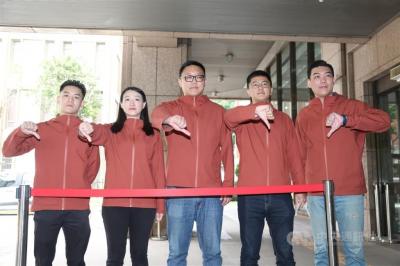The gender pay gap in Taiwan showed no improvement last year, with women earning NT$283 per hour on average, or 85.4 percent of the average hourly income of men, the Ministry of Labor said on Thursday.
The ministry has conducted an annual survey of the gender pay gap since 2002, with the calculations based on profession, seniority, education level and job performance, and include overtime, the ministry said.
Women would have to work for 54 extra days to earn the same amount as men, placing the equal payday on Feb. 23, the ministry said.
The equal payday is a symbolic date indicating how far into the following year women would have to work to compensate for wages lost to gender-based income inequality.
Following revisions to statistical methodology, the 2016 gender pay gap of 52 days was increased to 54 days, indicating that the gender income equality did not improve or worsen in the past two years, it said.
Overall, the statistical trend suggests that the gender pay gap has been narrowing over the past decade, the ministry said, adding that the gender difference in income had shrunk by 4 percentage points, or the equivalent of 15 work days.
The nation’s gender pay gap last year was smaller than that of Japan (32.3 percent) and the US (18.9 percent), while the latest available figure for South Korea was 34.1 percent in 2017, the ministry said.
However, South Korea made the most progress among the four nations in narrowing the gender pay gap over the past decade, with the figure shrinking by 5.1 percent, compared with Japan’s 4.1 percent and the US’ 1.2 percent, the ministry said.

Taiwan is stepping up plans to create self-sufficient supply chains for combat drones and increase foreign orders from the US to counter China’s numerical superiority, a defense official said on Saturday. Commenting on condition of anonymity, the official said the nation’s armed forces are in agreement with US Admiral Samuel Paparo’s assessment that Taiwan’s military must be prepared to turn the nation’s waters into a “hellscape” for the Chinese People’s Liberation Army (PLA). Paparo, the commander of the US Indo-Pacific Command, reiterated the concept during a Congressional hearing in Washington on Wednesday. He first coined the term in a security conference last

Prosecutors today declined to say who was questioned regarding alleged forgery on petitions to recall Democratic Progressive Party (DPP) legislators, after Chinese-language media earlier reported that members of the Chinese Nationalist Party (KMT) Youth League were brought in for questioning. The Ministry of Justice Investigation Bureau confirmed that two people had been questioned, but did not disclose any further information about the ongoing investigation. KMT Youth League members Lee Hsiao-liang (李孝亮) and Liu Szu-yin (劉思吟) — who are leading the effort to recall DPP caucus chief executive Rosalia Wu (吳思瑤) and Legislator Wu Pei-yi (吳沛憶) — both posted on Facebook saying: “I

Sung Chien-liang (宋建樑), who led efforts to recall Democratic Progressive Party (DPP) Legislator Lee Kun-cheng (李坤城), was released on bail of NT$80,000 today amid outcry over his decision to wear a Nazi armband to questioning the night before. Sung arrived at the New Taipei District Prosecutors’ Office for questioning in a recall petition forgery case last night wearing a red armband bearing a swastika, carrying a copy of Adolf Hitler’s Mein Kampf and giving a Nazi salute. Sung left the building at 1:15am without the armband and covering the book with his coat. Lee said today that this is a serious

The Ministry of Economic Affairs has fined Taobao NT$1.2 million (US$36,912) for advertisements that exceed its approved business scope, requiring the Chinese e-commerce platform to make corrections in the first half of this year or its license may be revoked. Lawmakers have called for stricter enforcement of Chinese e-commerce platforms and measures to prevent China from laundering its goods through Taiwan in response to US President Donald Trump’s heavy tariffs on China. The Legislative Yuan’s Finance Committee met today to discuss policies to prevent China from dumping goods in Taiwan, inviting government agencies to report. Democratic Progressive Party Legislator Kuo Kuo-wen (郭國文) said